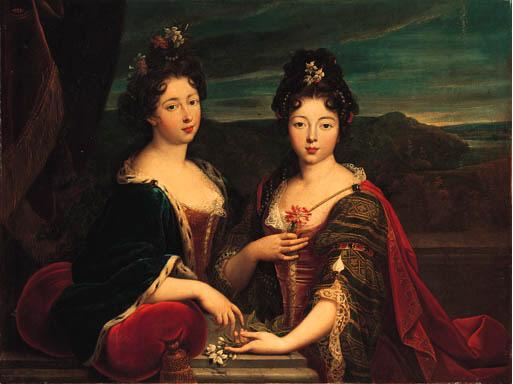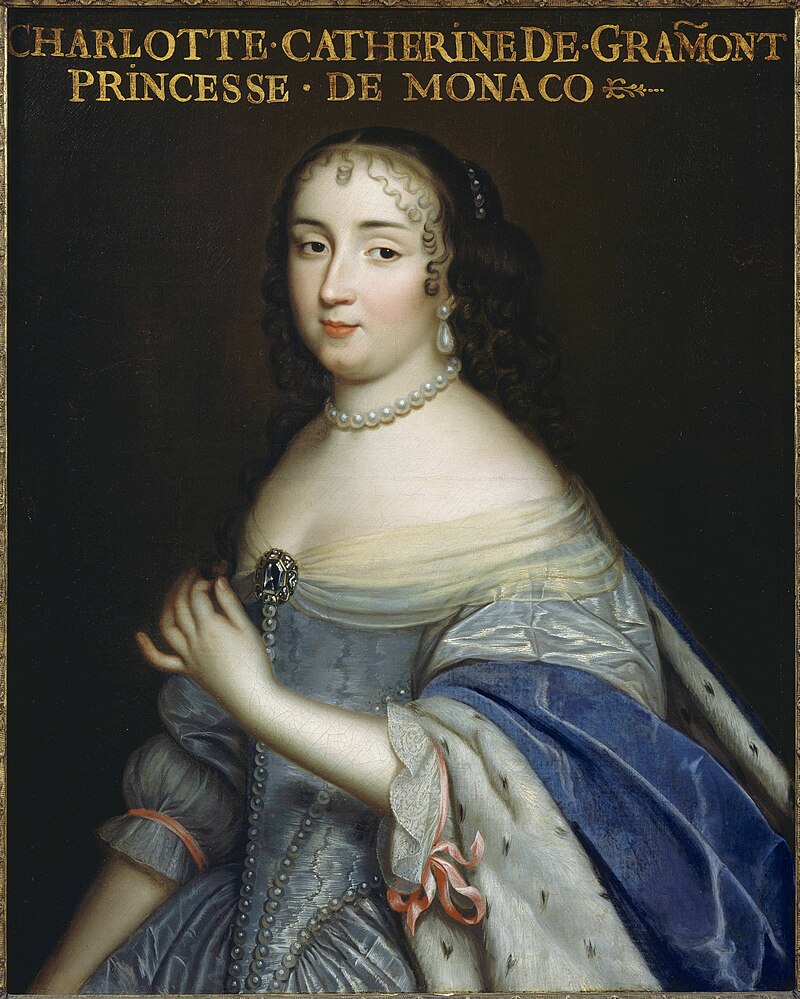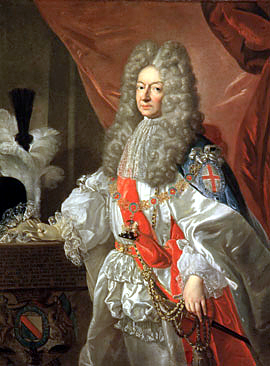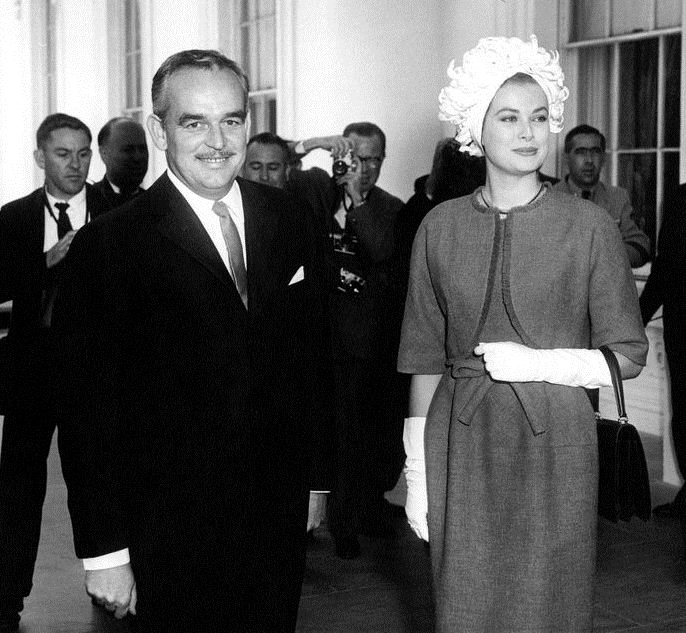by Susan Flantzer
© Unofficial Royalty 2022

Jacques I, Prince of Monaco; Credit – Wikipedia
Jacques was the husband of Louise-Hippolyte, Sovereign Princess of Monaco and was briefly the Sovereign Prince of Monaco. From a wealthy French noble family, Jacques François Leonor Goyon de Matignon was born at the de Goyon de Matignon family chateau, Château des Matignon, in Torigni-sur-Vire in Normandy, France, on November 21, 1689. He was the elder of the two sons and the second of the three children of first cousins Jacques III Goyon de Matignon, Count of Thorigny, a Lieutenant General in the French army, (1644 – 1725) and Charlotte de Goyon de Matignon, Countess of Thorigny (1657 – 1721).
- Catherine Elisabeth de Goyon de Matignon (1677 – 1706), married Louis Jean Baptiste de Goyon de Matignon, Count of Gacé and de Montmartin
- Male, name unknown (1690 – 1694)
In 1641, during the reign of Honoré II, Monaco became a French protectorate, and the Princes of Monaco became vassals of the Kings of France while remaining sovereign princes. Many successive Princes of Monaco and their families spent most of their lives in France and intermarried with French and Italian noble families, so it would not be unusual for Antonio I, Prince of Monaco, to look for a prospective husband for his elder surviving daughter Louise-Hippolyte, among young men from noble French families.

Louise-Hippolyte, Sovereign Princess of Monaco; Credit – Wikipedia
Louise-Hippolyte occupied an unprecedented position in the Princely Family of Monaco. The greatest concern of Antonio I, Prince of Monaco was the future of the House of Grimaldi. Because Antonio’s only legitimate children were all daughters, the heir to the throne was his only brother François Honoré Grimaldi, a Catholic priest with the title Monsieur l’Abbé de Monaco, later Archbishop of Besançon. In 1715, François Honoré renounced his claims to the throne of Monaco and Antonio’s elder surviving daughter Louise Hippolyte became his heir. Antonio decided, with the permission of King Louis XIV of France, that Louise Hippolyte’s husband would take the surname Grimaldi and jointly rule Monaco with her.
However, Antonio I, Prince of Monaco and his wife, born Marie of Lorraine, a daughter of Louis of Lorraine, Count of Armagnac, a member of the House of Guise, a cadet branch of the House of Lorraine, who held the rank of prince étranger at the French court, butted heads over prospective husbands for their elder daughter. Marie, supported by her family, refused to consent to Antonio’s choice. This resulted in a conflict that lasted for two years and greatly angered King Louis XIV of France. Marie told Louise-Hippolyte to refuse her father’s choice resulting in Antonio confining Louise-Hippolyte in a convent for two years. When Antonio discovered that his marriage plans for his daughter were not favored at the French court, he was forced to release Louise-Hippolyte from her convent confinement and forgo his marriage plans. However, Marie had another trick up her sleeve. She arranged for the Duchess de Lude to suggest the wealthy Jacques François Leonor Goyon de Matignon as a husband for Louise-Hippolyte, and Antonio agreed. When Antonio later found out that Marie had manipulated his choice by having the Duchess de Lude suggest Jacques Goyon, Count of Matignon, his already poor relationship with Marie and Antonio further worsened.
On October 20, 1715, 26-year-old Jacques married 18-year-old Louise-Hippolyte, the heir to the throne of Monaco, with the promise that he would jointly reign with her as Jacques I, Prince of Monaco.

The children of Jacques and Louise-Hippolyte; Credit – Wikipedia
Louise-Hippolyte and Jacques had nine children but only four survived to adulthood:
- Antoine-Charles, Marquis des Baux and Count de Matignon, (1717 – 1718), died in infancy
- Charlotte Thérèse Nathalie (1719 – 1790), a nun at the Convent of the Visitation in Paris, France
- Honoré III, Prince of Monaco (1720 – 1795), married Maria Caterina Brignole, had two sons including Honoré IV, Prince of Monaco
- Charles, Count de Carladés and Count de Matignon (1722 – 1749), unmarried, died from smallpox at the age of 27
- Jacques (born and died 1723), died in infancy
- Louise Françoise, Mademoiselle des Baux (1724 – 1729), died in childhood
- François-Charles, Count of Thorigny (1726 – 1743), died in his teens
- Charles-Maurice, Count de Valentinois (1727 – 1798), married Marie Christine Chrétienne de Rouvrois, no children
- Marie Françoise Thérése, Mademoiselle d’Estouteville (1728 – 1743), died in her teens

The Hôtel de Matignon, Jacques’ Paris residence, now the official residence of the Prime Minister of France; Credit – By ScareCriterion12 – Own work, CC BY-SA 4.0, https://commons.wikimedia.org/w/index.php?curid=62918157
Because of the poor relationship between Louise-Hippolyte’s parents, the couple decided to live in France. They spent their time between Jacques’ mansion in Paris, the Hôtel de Matignon, now the official residence of the Prime Minister of France, and Torigni-sur-Vire in Normandy, France where the de Goyon de Matignon family chateau, Château des Matignon, was located. Highly unusual for the time, Jacques was faithful to his wife and the marriage was happy.

The Château des Matignon, Jacques’ family home in Torigni-sur-Vire in Normandy, France; Credit – Par Selbymay Travail personnel, CC BY-SA 4.0, https://commons.wikimedia.org/w/index.php?curid=62739796
On February 20, 1731, at the age of 70, Jacques’ father-in-law Antonio I, Prince of Monaco died. His wife Louise-Hippolyte was now the Sovereign Princess of Monaco, and Jacques was to co-reign. However, Louise-Hippolyte traveled alone from Paris to Monaco, arriving on April 4, 1731, when the people of Monaco received her enthusiastically. Louise-Hippolyte immediately took the oath of loyalty but there was no mention of her husband Jacques. According to the decision made years earlier by Louise-Hippolyte’s father, her husband would take the surname Grimaldi (which Jacques had done) and jointly rule Monaco with her as Jacques I, Prince of Monaco. However, Louise-Hippolyte decreed that she would be the sole ruler, all documents would be issued in her name only, and her husband and children would stay in France.
While historians have differing opinions about what caused Louise-Hippolyte’s behavior, it appears likely that she was not really happy with her marriage. Jacques and their children came to Monaco a few weeks after Louise-Hippolyte had taken the oath of loyalty but he stayed for a short time before returning to France alone. The rumors at the French court said that Jacques had wished to be named along with his wife in the official proclamation of accession, and when that was denied, the couple separated.
Louise-Hippolyte had a very short reign of ten months. Several weeks before Christmas of 1731, a smallpox epidemic spread through the Mediterranean coastal areas. Louise-Hippolyte died from smallpox at the age of 34, on December 29, 1731. Upon Louise-Hippolyte’s death, Jacques, now the legal guardian of their eldest son Honoré, returned to Monaco with a plan. Jacques should rule as Prince of Monaco until Honoré reached his twenty-fifth birthday. At that time, Honoré would abdicate in favor of his father following the example of sons who gave up their fathers’ land they had inherited through their mothers. Although the plan was initially accepted, it met with increasing opposition. It is possible that Louise-Hippolyte had suspected her husband was power-hungry and that was why she denied him being named as her co-ruler.
Finally, in May 1732, Jacques handed over the rule of Monaco to his brother-in-law Antonio Grimaldi, Chevalier de Grimaldi, an illegitimate son of Antonio I, Prince of Monaco. Jacques’ official abdication date was November 7, 1733, but he had long since returned to Paris with his son who was now technically Honoré III, Prince of Monaco. Antonio Grimaldi, Chevalier de Grimaldi became Governor-General of Monaco, was the de facto ruler of Monaco from 1732 until he died in 1784, and ably served as regent for more than fifty years for his nephew Honoré III, even after Honoré returned to Monaco.
Jacques spent the last nineteen years of his life living at his Paris mansion, the Hôtel de Matignon, and the de Goyon de Matignon family chateau, Château des Matignon, in Torigni-sur-Vire in Normandy, France, in addition to spending time at the French court at the Palace of Versailles. In 1740, a second marriage was proposed for Jacques with Louise-Françoise de Bourbon-Maine, a granddaughter of King Louis XIV of France and his mistress Françoise-Athénaïs de Rochechouart de Mortemart, Marquise of Montespan. However, the marriage never occurred and Jacques never remarried.

Église Saint-Laurent, the church where Jacques was buried; Credit – Wikipedia
The former Jacques I, Prince of Monaco, died, aged 61, on April 23, 1751, at his Paris home, the Hôtel de Matignon. He was buried at the Église Saint-Laurent, the burial site of Jacques’ birth family, in Torigni-sur-Vire in France, but his remains were lost during the French Revolution.
This article is the intellectual property of Unofficial Royalty and is NOT TO BE COPIED, EDITED, OR POSTED IN ANY FORM ON ANOTHER WEBSITE under any circumstances. It is permissible to use a link that directs to Unofficial Royalty.
Works Cited
- Edwards, Anne, 2017. The Grimaldis of Monaco. Blue Ridge Summit: Lyons Press.
- En.wikipedia.org. 2022. Jacques I, Prince of Monaco – Wikipedia. [online] Available at: <https://en.wikipedia.org/wiki/Jacques_I,_Prince_of_Monaco> [Accessed 25 February 2022].
- En.wikipedia.org. 2022. Louise Hippolyte, Princess of Monaco – Wikipedia. [online] Available at: <https://en.wikipedia.org/wiki/Louise_Hippolyte,_Princess_of_Monaco> [Accessed 25 February 2022].
- Flantzer, Susan, 2022. Unofficial Royalty. [online] Louise-Hippolyte, Sovereign Princess of Monaco. Available at: <https://www.unofficialroyalty.com/louise-hippolyte-sovereign-princess-of-monaco/> [Accessed 25 February 2022].
- geni_family_tree. 2022. Jacques I, V. prince de Monaco. [online] Available at: <https://www.geni.com/people/Jacques-I-V-prince-de-Monaco/5294705825110117665> [Accessed 25 February 2022].
- Sv.wikipedia.org. 2022. Louise-Hippolyte av Monaco – Wikipedia. [online] Available at: <https://sv.wikipedia.org/wiki/Louise-Hippolyte_av_Monaco> [Accessed 25 February 2022].

























